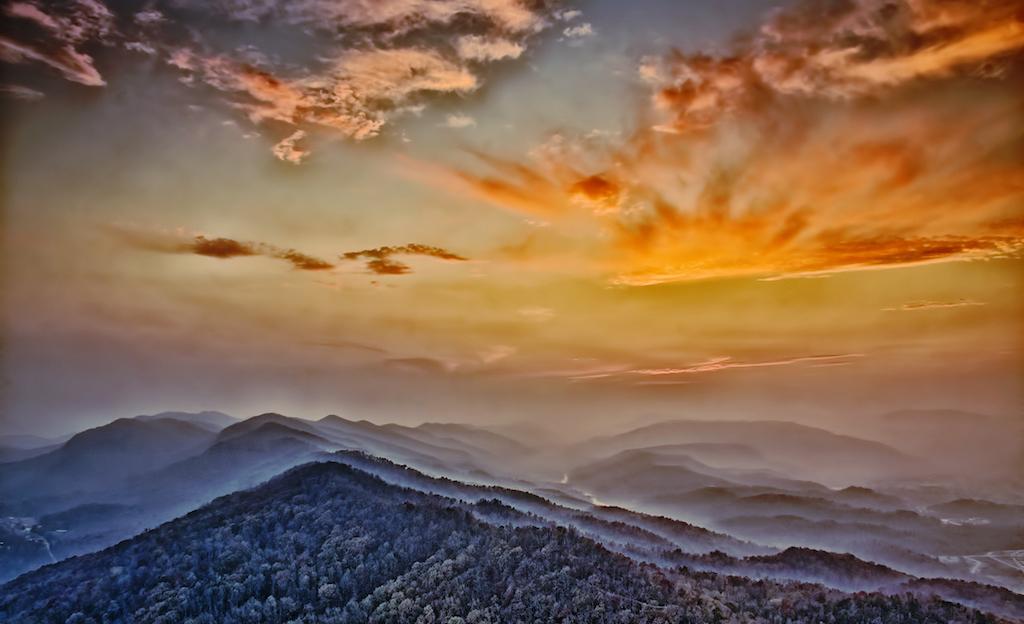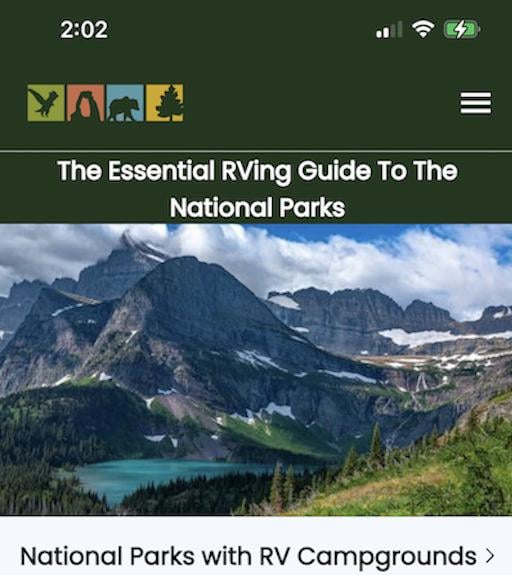
The Interior Department and National Park Service are expected to launch a marketing campaign for lesser known park units, such as Cumberland Gap National Historical Park/Harold Jerrill
A campaign to promote lesser-known units of the National Park System is being planned by the Interior Department in a bid to reduce crowding in some of the nation's most popular parks while also highlighting overlooked wonders.
But Shannon Estenoz, Interior's assistant secretary for Fish and Wildlife and Parks, declined Wednesday to say whether the administration also was working to identify landscapes across the federal domain that President Biden could protect via The Antiquities Act to advance his 30 by 30 initiative and in a bid to reduce crowding in the park system.
"Future designations of protected areas is one of the tools in the toolbox, but the toolbox is very large," Estenoz replied when asked about that possibility during a conference call to celebrate the one-year anniversary of enactment of the Great American Outdoors Act. "And we'll focus also on promoting visitation to existing (National Park System) areas. So for example, most of our overcrowding problem in the National Park Service (involves) close to 15 of our park units; we have more than 420 park units, and there are many, many national parks that folks don't know about."
The assistant secretary also noted that "there are many gateway communities around those lesser known parks that aren't receiving the sort of maximum economic benefit that often comes with being a gateway community to a national park unit."
The call organized by the Outdoor Recreation Roundtable, a trade organization that represents many businesses in the outdoor industry, was held to outline progress made across the federal lands since the Great American Outdoors Act was signed into law by President Trump and began funneling billions of dollars to the National Park Service, U.S. Forest Service, Bureau of Land Management and other federal land management agencies.
Under the act, the National Park Service is to receive $6.5 billion over five years to help the agency deal with its maintenance backlog. Additionally, it also provides full funding ($900 million) for the Land and Water Conservation Fund, which is used to help the Park Service acquire private inholdings within the National Park System as well as to aid states and local governments in providing recreational outlets in their jurisdictions.
"The outdoor industry contributes $788 billion to the U.S. (gross domestic product) and employs 523 million Americans, which is 3.3 percent of the total U.S. workforce and is larger than the agriculture and extractive industries," said Jessica Turner, ORR's executive director. "As Americans spend more time outside at our national parks, grasslands, state and local parks, these GAOA investments become more important than ever to support the growing outdoor recreation industry and the millions of visitors to our shared public lands and waters every year."
Estenoz described the act as "game-changing legislation that really will result in generational change for public lands for recreation and conservation in our country."
"In retrospect, we see now that that GAOA really couldn't have come at a more poignant and relevant time, as parks and other public lands and waters have, and continue, to provide respite and rejuvenation to a pandemic-weary American public," said the assistant secretary. "These investments are being made under the act at a time when people really are clamoring for more access to the outdoors."
But that clamoring has led to overcrowding in some of the park system's key destinations: Acadia, Arches, Grand Canyon, Rocky Mountain, Yellowstone and other "crown jewels."
A Senate subcommittee meeting in late July took testimony regarding problems created by overcrowding. Among the possible fixes raised during the roughly hour-long hearing were improvements in technology to guide park visitors to less-crowded areas in specific parks, marketing campaigns to highlight smaller, overlooked units of the park system, more shuttle systems to manage traffic, and even additional units added to the system.
"The fact (is) there are no obvious answers to some of these challenges, there is no one single solution that will fit all the situations in our parks," subcommittee Chairman Sen. Angus King, I-Maine, said in his opening comments at that hearing. "I know there is a path forward that we can build by collaboration and input from the local level, and it's my hope that our conversation today is a step in that direction."
Estenoz didn't provide any details of how Interior and the Park Service would promote lesser-known park units, though she said those parks and their gateway communities need to have the infrastructure in place to handle more visitors.
Michelle Lane, vice president for government relations for the National Park Foundation, also was on the call and said the foundation was looking forward "to continuing to partner with Department of Interior and the National Park Service specifically on this work. It's something we have been working on for years."



Comments
Nomenclature could be an issue. Areas designated as National Parks get lots of attention in the media. Equally spectacular areas get not much notice. However, before bestowing the National Park designation on National Monuments, Historical Parks, Seashores and Lakeshores, the government should rethink how it "markets" national parks. The well-known dual mandate requires balance, not enhancing public enjoyment at the expense of preserving nature. Overcrowding in many parks stems from maps, posters, signs, etc. promoting a select few sites such as Cadillac Mountain and Sand Beach in Acadia, Angels Landing in Zion, and Trail Ridge Road in Rocky Mountain. To help local economies in gateway towns, NPS needs to reconsider concessions within the parks that duplicate goods and services available in gateway towns. What do restaurants and gift shops within the park offer to the visitor that cannot be done in a local restaurant or gift shop besides parking problems and waste? Consider the park itself and the surrounding area as a destination in itself and not specific destinations within the park.